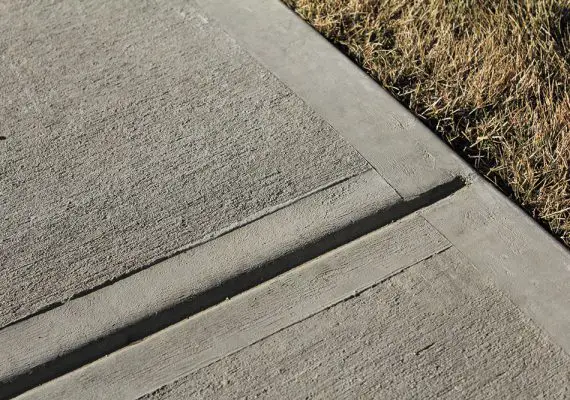What Is A Fire Brick? What Is A Fire Brick Used For
What Is A Fire Brick?
A fire brick is a special type of brick which is specifically designed to withstand high temperatures, such as those found in fireplaces, wood stoves, and ovens. Fire bricks are usually composed of refractory ceramic material such as fire clay or a combination of aluminum oxide and silicon carbide, with the latter providing greater heat resistance.
A fire brick is a special type of brick that is well known for its exceptional ability to withstand extremely high temperatures.
Fire bricks often contain lime and other additives to increase their strength when subjected to extreme heat over long periods of timne. These bricks come in various sizes and shapes to suit different applications.
This makes them an ideal material for lining furnaces, kilns and fireplaces, as they prevent damage to the structure by providing insulation from direct heat while still allowing heat energy to be absorbed and radiated around the space.
Fire bricks are usually made out of either clay or a combination of clay and another material like calcium silicate which adds additional strength. They come in various sizes and shapes, depending on their intended use.
Fire bricks can also be used as wall tiles for walls that will face extreme temperatures or flashings around chimney flues or other hot spots in a home.
What Is A Fire Brick Used For
A fire brick is a block of heat-resistant material used to line furnaces, fireplaces and kilns. It is typically made from alumina, magnesia or soft materials such as clay.
Fire bricks are designed to withstand temperatures up to 1400°C and can be used to prevent direct contact with flames, hold in heat while allowing other parts of the structure to remain cool and protect structural components from intense radiation.
It is often used in furnaces for smelting metals, glass manufacturing processes, or ceramic firing. Fire bricks can also be applied as insulation around ovens, stoves and fireplaces, providing additional protection and improved efficiency.
What’s The Difference Between Fire Bricks And Regular Bricks?
The main distinction between fire bricks and regular bricks is their ability to withstand high temperatures.
Fire bricks, which are composed of 23% alumina and 73% silica, along with other metal oxides, are able to withstand temperatures above 1800°C without decomposing. On the other hand, regular bricks begin to degrade at temperatures of around 1200°C.
Fire bricks are a special type of brick that are specifically designed to withstand extreme heat and thermal shock, making them ideal for applications such as lining fireplaces or outdoor ovens. Regular bricks, on the other hand, are not designed to resist these types of conditions and they can easily crack or break when exposed to heat.
Fire bricks feature relatively high heat capacity which allows them to absorb more heat before reaching their structural limit. They also have greater insulating properties than regular bricks, meaning they conduct less heat – ideal for keeping temperature fluctuations at a minimum.
What Is Fire Brick Made Of?
Fire brick is made from a dense type of refractory ceramic known as fire clay. It is incredibly heat resistant and has excellent insulating qualities due to its low thermal conductivity. Fire brick comprises alumina, silica, iron oxide, magnesia, and lime.
These materials make fire brick ideal for ovens, stoves, furnaces, and other high-temperature applications. Its insulating properties make it perfect for use around flue pipes and chimneys.
Fire bricks can be found in various colors ranging from yellow to red, depending on the proportion of raw materials used during production.
Can Any Brick Be Used As A Fire Brick?
No, not all bricks can be used as fire bricks. Fire bricks are specially designed and manufactured with a highly heat-resistant material such as fire clay or special refractory ceramic.
These materials are generally denser than regular bricks, providing excellent insulation and heat resistance crucial for applications exposed to extreme temperatures, such as pizza ovens, kilns, furnaces, fireplaces, and wood stoves.
Additionally, the porosity of brick affects its ability to store fuel and release it slowly to maintain steady combustion in these types of applications. Therefore fire brick should always be used when constructing an area that will face exposure to extreme temperatures.
What Can I Use Instead Of Firebrick?
Firebrick can be replaced with other materials, such as red clay bricks, ceramic tiles, concrete blocks, and refractory cement. Clay bricks provide a similar level of heat resistance, are cheaper than firebrick, and can be formed into different shapes as needed.
On the other hand, ceramic tiles provide a more aesthetically pleasing finish than typical brickwork but may not offer quite the same level of insulation.
Blocks made out of concrete also offer similar levels of heat resistance to firebrick while being easy to work with in most applications.
Finally, refractory cement is meant for applications where high temperatures are expected and offer great performance under extreme conditions; however, it is unsuitable for decorative projects because it has an unattractive greyish finish.
When Should I Use Fire Bricks?
Fire bricks should be used in areas or applications where high demands are placed on heat resistance. These include fireplaces, pizza ovens, stoves and grills.
Fire bricks also provide insulation to walls that come into contact with high temperatures such as kilns or furnaces, and they can provide insulating materials for hot air ducts and other structures that need to withstand high temperatures.
Fire bricks are also an effective option for outdoor barbecues given their high heat tolerance.


